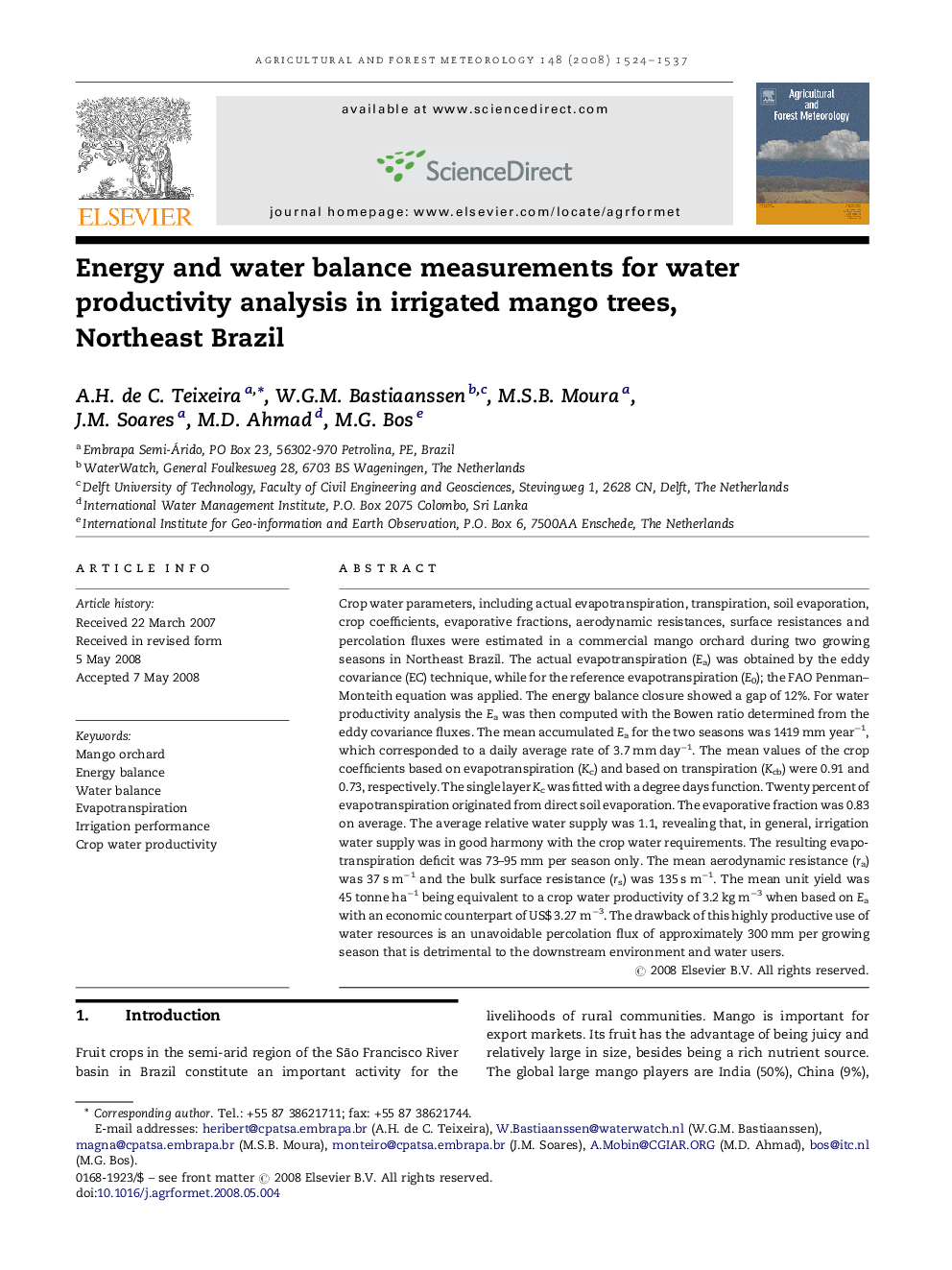| کد مقاله | کد نشریه | سال انتشار | مقاله انگلیسی | نسخه تمام متن |
|---|---|---|---|---|
| 82580 | 158403 | 2008 | 14 صفحه PDF | دانلود رایگان |

Crop water parameters, including actual evapotranspiration, transpiration, soil evaporation, crop coefficients, evaporative fractions, aerodynamic resistances, surface resistances and percolation fluxes were estimated in a commercial mango orchard during two growing seasons in Northeast Brazil. The actual evapotranspiration (Ea) was obtained by the eddy covariance (EC) technique, while for the reference evapotranspiration (E0); the FAO Penman–Monteith equation was applied. The energy balance closure showed a gap of 12%. For water productivity analysis the Ea was then computed with the Bowen ratio determined from the eddy covariance fluxes. The mean accumulated Ea for the two seasons was 1419 mm year−1, which corresponded to a daily average rate of 3.7 mm day−1. The mean values of the crop coefficients based on evapotranspiration (Kc) and based on transpiration (Kcb) were 0.91 and 0.73, respectively. The single layer Kc was fitted with a degree days function. Twenty percent of evapotranspiration originated from direct soil evaporation. The evaporative fraction was 0.83 on average. The average relative water supply was 1.1, revealing that, in general, irrigation water supply was in good harmony with the crop water requirements. The resulting evapotranspiration deficit was 73–95 mm per season only. The mean aerodynamic resistance (ra) was 37 s m−1 and the bulk surface resistance (rs) was 135 s m−1. The mean unit yield was 45 tonne ha−1 being equivalent to a crop water productivity of 3.2 kg m−3 when based on Ea with an economic counterpart of US$ 3.27 m−3. The drawback of this highly productive use of water resources is an unavoidable percolation flux of approximately 300 mm per growing season that is detrimental to the downstream environment and water users.
Journal: Agricultural and Forest Meteorology - Volume 148, Issue 10, 3 September 2008, Pages 1524–1537